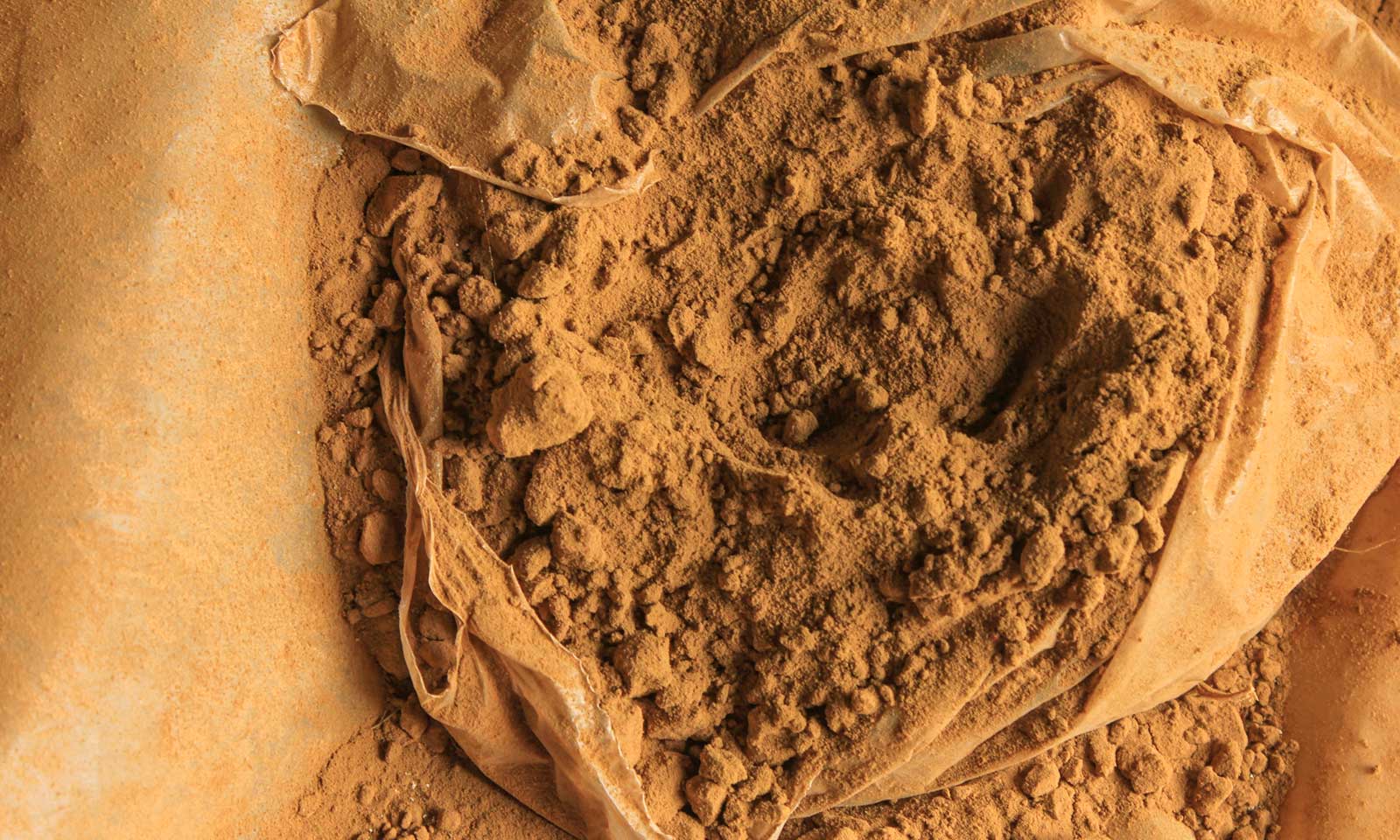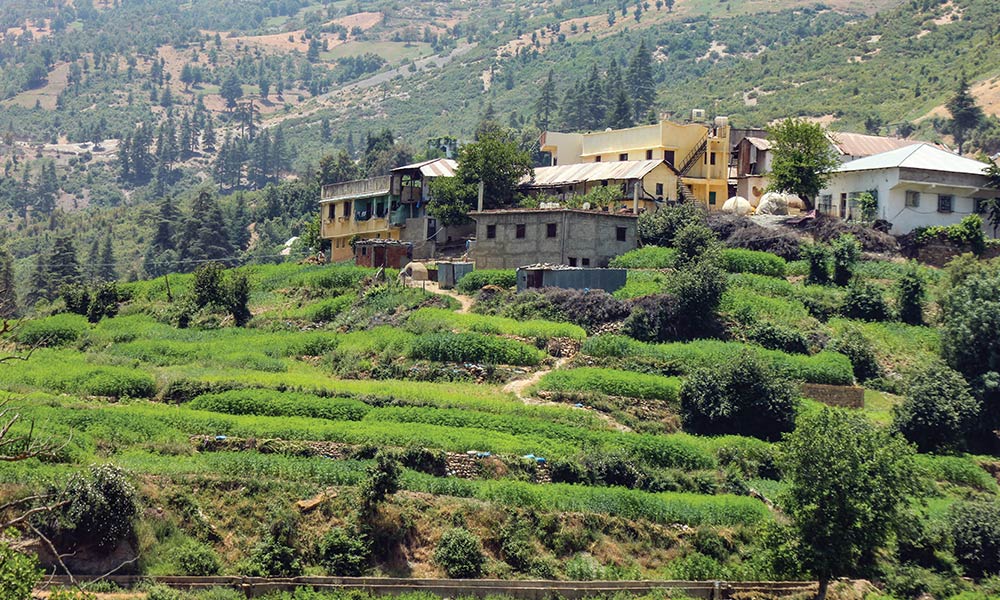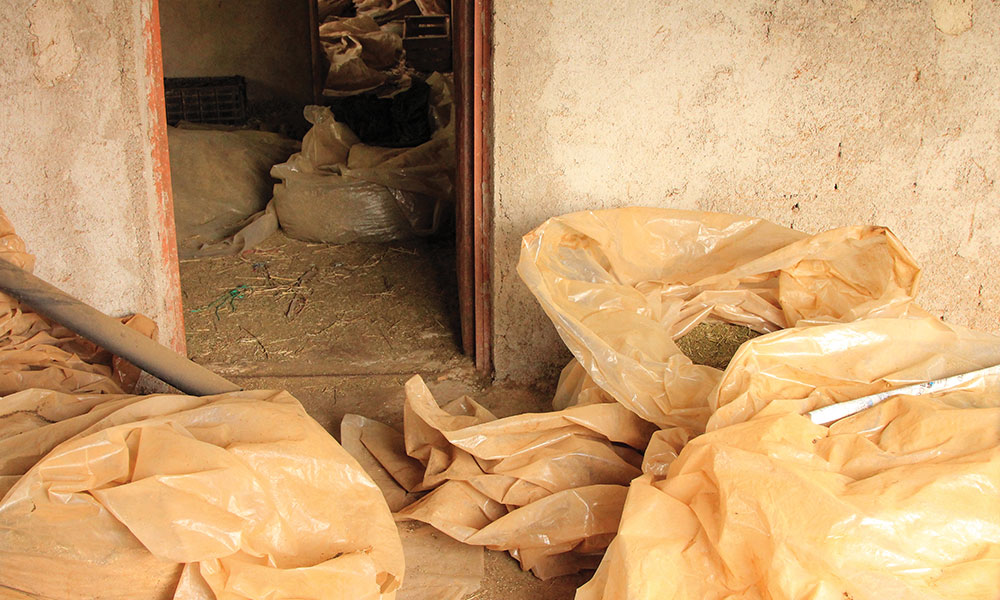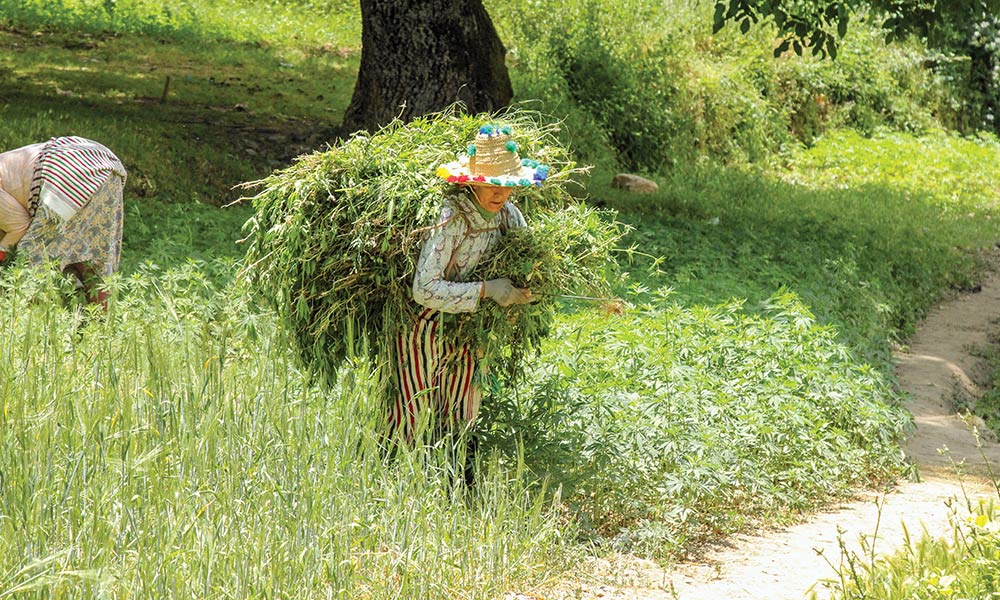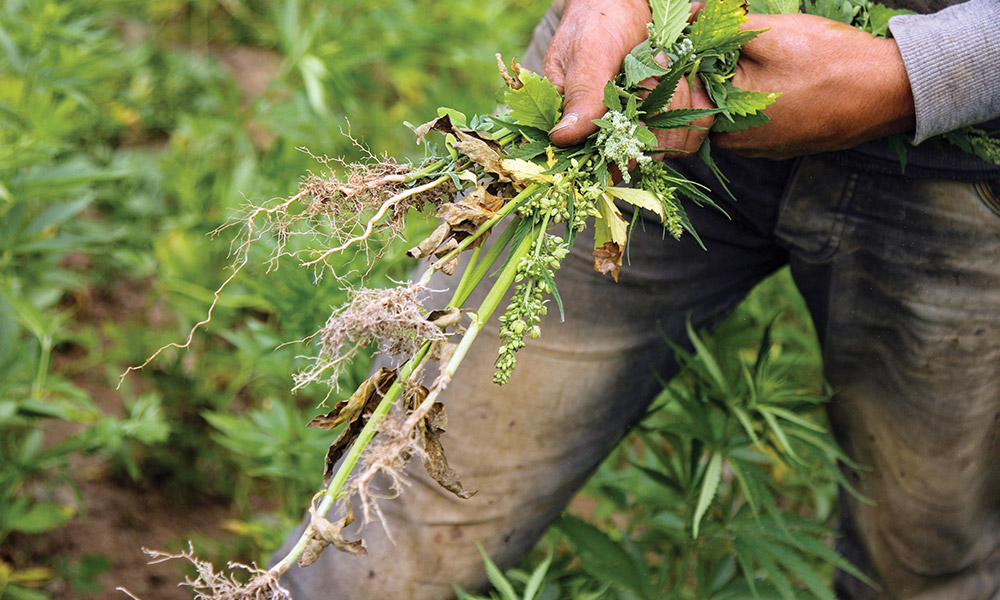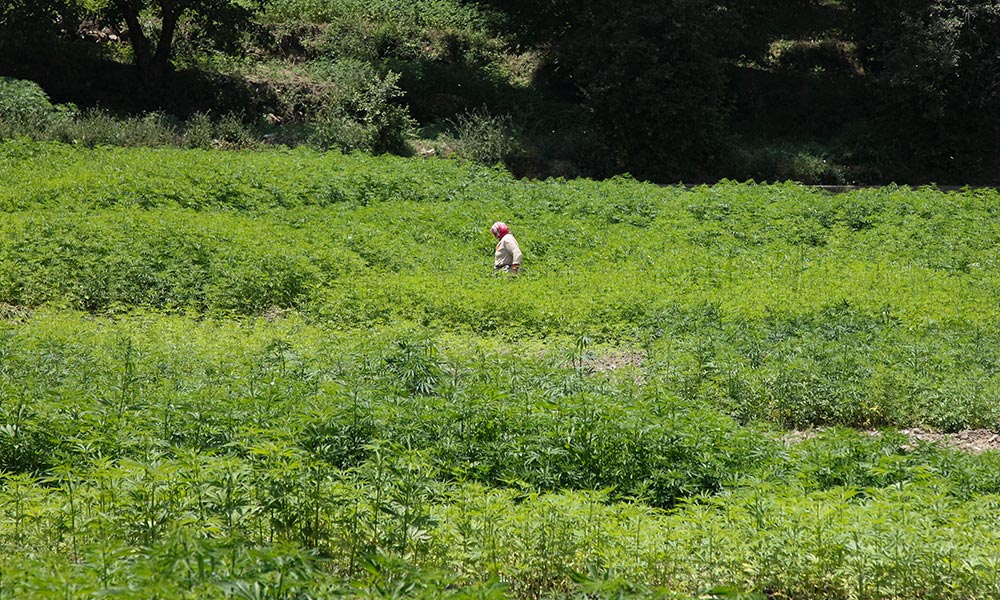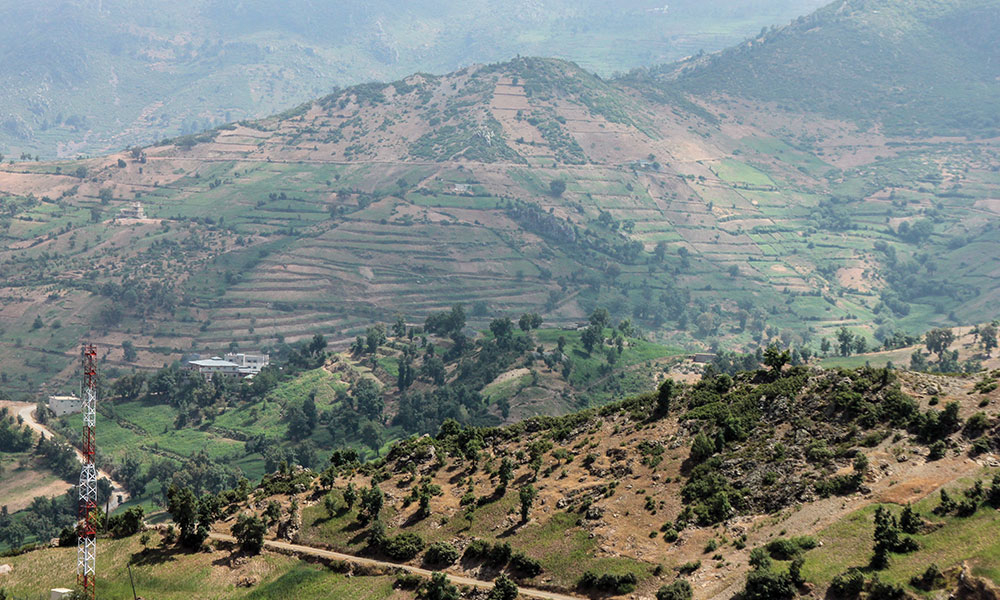Cultivation, Culture, Educational
A Journey to the Heart of Moroccan Hash
By
Picture yourself in a valley with no other crop than cannabis. Everywhere, all you see are plants as tall as your thigh. From the hotel window, you see just the street, abandoned construction and then cannabis stretching over the valley and up the hills — the crop so valuable that even the steepest mountains are terraced for ganja.
I was first here many years ago, before the European entrepreneurs changed the landscape. The hash then was so impotent I could hardly get high from it.
I was in a teashop in the hills when I lit up an Amsterdam joint and was crowded to share it. I thought that “good Morroccan hash” was a contradiction in terms.
But I noticed then that the landrace did have some interesting qualities. It didn’t grow bushy or tree-like. A single plant grown alone grew but one single stem — the perfect strain for growing close together and flowering young in a Sea of Green.
By early September, this variety was finished and reaped. It was set to dry outdoors in the waning heat of summer and then stored in unheated watertight sheds until winter. The freeze was the perfect time for it to be kiefed.
In Ketama, every bit of arable land is planted in cannabis. Sloping areas are leveled using terraces to hold the soil in place.
Once the leaves dried, they fell from the plants, leaving stems bare-topped with buds like matches with crowns. Now frozen, the glands remained tenuously attached to the buds. A firm rap against the taut silk screen sent the trichomes into a cloud, then settling and falling through the tiny openings in the cloth. This was the kief, the glands all concentrated.
Those landrace strains that peppered the Rif Mountains are now history, replaced with hybrids of landrace and mixed European strains. Every field in the region is subject to wind-driven pollen. There are no exceptions and no way to protect the flowers. There is no sinsemilla, only con semilla.
Ketama Getaway
My return to Morocco this summer was based on whim. I was in Amsterdam for 10 days between gigs and I had a wide circle of three-hour flight choices or maybe a bicycle trip in Holland, much postponed. But fatefully, an acquaintance said, “Why don’t you go to Morocco?”
I mentioned it to my wife Jane and, much to my surprise, she immediately was intrigued, solving our dilemma. We set to planning the trip. To be in Morocco and not to go to Ketama? That could not be, it would have to be a part of our unplanned trip.
We landed in Marrakech, a medium-sized city in the foothills of the Atlas Mountains. Every city has its sights, sounds, museums and monuments. What stands out here is the old city’s souk, a combination of residence and bazaar in tight quarters, narrow streets, congestion stores and stalls. Here you can find lamb cut from the carcass, clothing, electronics, toys and spices — the substances and requirements of daily life.
One-hundred-year-old prints at the Photo Museum gave a perspective. We see the same buildings, the same streets, maybe some of the same stores. But now, the men dress western and some of the women, too. The burka crowd has changed from comfy white to black. Scooters and cycles have replaced donkeys. The souk is slowly changing.
After Marrakech, our next stop was Chefchaouen, the Blue City, nicknamed for the most popular color paint sold there. It’s filled with travelers, restaurants and rug dealers and is a popular tourist city, especially for Moroccans.
Finally, onward to Ketama, to the town of Issaguen. Here, in the heart of the area, the Moroccan flag fails to fly. This is the land of the Berbers, who were here before all others, perhaps for thousands of years, protected by fierce fighters and the rugged Rif Mountains.
We rode to Ketama in a grand taxi roomy enough for four on well-kept roads through a constantly changing landscape, climbing towards the foothills.
We saw moist agricultural land and dry. The fields were planted in figs, olives, grapes, wheat and hay. Then, we entered the special area known as Ketama.
At the boundary line, there was a change of crops and the edibles vanished. Here, the fruits of the earth were represented solely by cannabis on every piece of arable land — flat fields, slopes and flattened hills, mountainsides etched with terraces skillfully hewn using hard labor. Small fields, large fields, backyards, front yards — all land was covered in cannabis, save home gardens.
We arrived at the depot, a gas station at the end of town. Like bees to flowers we were surrounded by “guides,” touting their tours. This continued until Rashid, a friend of a friend, came to pick us up. With our baggage loaded, we drove back to his home where we were to stay.
Rashid lived with his parents, wife, brother and sister-in-law and their two pre-school-age children. There were also a couple of older women, status undescribed.
The house was built around an inner courtyard where the women worked in summer. They left only to labor in the fields and for weddings, funerals and the like.
The guestrooms and single men’s quarters looked out at the fields and the family rooms and bedroom looked in — a clear separation. Going into town you’d think you were in a gay community. It was men, men, men and not a woman in sight, not in the diner or bar, nowhere. Except for the occasional Western woman.
Western women are a unique category in Ketama, treated as men, as “honorary men.” So there is no commotion when Jane and I walk in to eat or go to a store, but I think if we were locals it would be a different story.
Our host places us in a fairly uncomfortable room and feeds us late in the evening only when we ask to eat. The next day we are welcome to walk and photograph the fields, including his fields and the neighbor’s field, but we are isolated and bored, as Rachid disappeared during a good part of the day.
When he returns, we tell him the news that we are leaving, which I suspect is a relief for him. As a gesture of friendship, he takes us to see his cousin up the mountain.
He built a plateau at the top tip, now he’s constructing the house. It has a 360-degree view of the valleys below, the small villages, the fields starting in the valleys.
The property climbs up the hills, with wide plots between terraces, then thin slivers as it steepens.
Male plants are pulled up, placed in piles and eventually fed to the livestock. Goats love cannabis.
We have decided to move into the town, Issaguen, the cultural center of the area.
It specializes in irrigation and hardware stores, cafes with lots of men idling over their cups and that’s about it. The go-to eating establishment serves vegetables and salad as its specialty. The only entrée is rotisserie chicken, which is surprisingly good.
The view from my room’s window at the Grand Hotel Ketama: the cannabis fields start across the main road and a seasonal riverbed. No need for a hike to see the fields, they’re just a walk crosstown.
Growing Cannabis Plants in Ketama
Let me begin by saying that if you were expecting a jungle, you’ll be disappointed
When I was there 30 years ago the plants were taller, 4 or 5 feet, but now that they’re hybridized they are shorter.
The original landrace was a single-stem plant that ripened in late August through mid-September. It was weak, low in THC and made low-quality hash. Then, the European buyers brought in seeds, more and more seeds.
In Ketama, some plants are con semilla(with seed), as most males release their pollen so the population’s a mixed-up hybrid. No farmer can keep his field pure even if cleared of males because dust from males in surrounding fields would pollinate the crop. So be it. Each year, with more imported seed, this hybrid crop grows stronger.
Each farmers’ plot looked different from the next. Some strains looked more like this or that, descendants in part of favorites of years past. Some were like Blue Dream or maybe another hybrid, while another group was heavily indica.
The seeds were planted very close to each other, probably 10-12 seeds per square foot. Not all germinated, as others died early or were choked from canopy by faster neighbors. Each plant had only one stem and focused attention on its claim to canopy space. All of these fields, including the vigorous ones, were Sea of Green plantings.
The cannabis plants in Morocco flower early. While September 22 is the equinox when there is 12 hours of light and 12 hours of darkness on all points of the earth, plants grown outdoors here start to flower much earlier, often in August, indicating that they require only 9-10 hours of darkness or even less. In Morocco, on June 22 — first day of summer — there are 8 hours 39 minutes of darkness and on July 22, there are 9 hours and three minutes.
The females were just starting to flower in late July. They will be ripe mid to late September, when the age-old process of making the region’s famed hash begins.
The Rif Mountains define the hash making region of Morocco.
Read more from the source: CannabisNow.com
PHOTOS Ed Rosenthal


